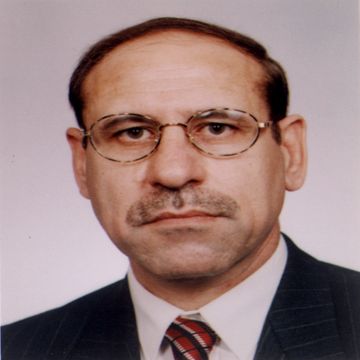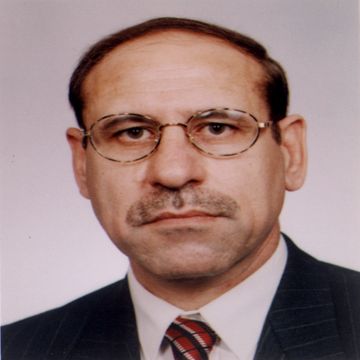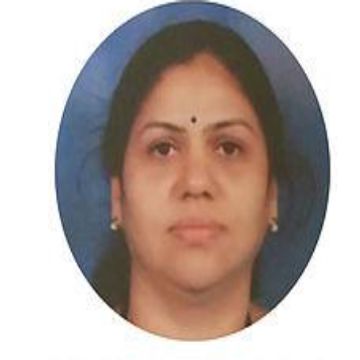Scientific Program
Keynote Session:
Title: Cognition and memory in ageing: Is diabetes an accelerated form of ageing?
Biography:
Prof. Amer Al Ansari was graduated from Basrah University/ College of Medicine in 1978, he got his PhD in neurophysiology in 1986 from Lauvain university/ College of medicine. Prof. Al Ansari worked in University of Utrecht in the Netherlands as senior researcher and University docent for about 20 years, and then joined the Arabian Gulf University/ College of Medicine and Medical Sciences staff in Bahrain. In addition to his teaching responsibilities, Prof. Amer worked as a consultant doctor in the Bahrain Defense Force hospital for the last 6 years.
Abstract:
The aim of the present study was to examine learning and hippocampal synaptic plasticity in ageing and diabetes. Many of the processes that have been implicated in the pathogenesis of brain ageing are also involved in the development of diabetic complications. We investigated Morris water maze performance and examined hippocampal synaptic plasticity in young adult and aged diabetic and non-diabetic rats. In hippocampal slices from young adult diabetic animals, long-term potentiation induced by 100 Hz stimulation was impaired compared with controls (138 vs 218% of baseline). In contrast, long-term depression induced by 1 Hz stimulation was enhanced in slices from diabetic rats compared with controls (79 vs 92%). In non-diabetic aged rats, synaptic responses were 149 and 93% of baseline in response to 100 and 1 Hz stimulation, compared with 106 and 75%in aged diabetic rats. Statistically significant learning impairments were observed in young adult diabetic rats compared with controls. These impairments were even greater. It is concluded that both diabetes and ageing affect learning and hippocampal synaptic plasticity. The cumulative deficits in learning and synaptic plasticity in aged diabetic rats indicate that the effects of diabetes and ageing on the brain could interact.
Title: Cognition and memory in ageing: Is diabetes an accelerated form of ageing?
Biography:
Prof. Amer Al Ansari was graduated from Basrah University/ College of Medicine in 1978, he got his PhD in neurophysiology in 1986 from Lauvain university/ College of medicine. Prof. Al Ansari worked in University of Utrecht in the Netherlands as senior researcher and University docent for about 20 years, and then joined the Arabian Gulf University/ College of Medicine and Medical Sciences staff in Bahrain. In addition to his teaching responsibilities, Prof. Amer worked as a consultant doctor in the Bahrain Defense Force hospital for the last 6 years.
Abstract:
The aim of the present study was to examine learning and hippocampal synaptic plasticity in ageing and diabetes. Many of the processes that have been implicated in the pathogenesis of brain ageing are also involved in the development of diabetic complications. We investigated Morris water maze performance and examined hippocampal synaptic plasticity in young adult and aged diabetic and non-diabetic rats. In hippocampal slices from young adult diabetic animals, long-term potentiation induced by 100 Hz stimulation was impaired compared with controls (138 vs 218% of baseline). In contrast, long-term depression induced by 1 Hz stimulation was enhanced in slices from diabetic rats compared with controls (79 vs 92%). In non-diabetic aged rats, synaptic responses were 149 and 93% of baseline in response to 100 and 1 Hz stimulation, compared with 106 and 75%in aged diabetic rats. Statistically significant learning impairments were observed in young adult diabetic rats compared with controls. These impairments were even greater. It is concluded that both diabetes and ageing affect learning and hippocampal synaptic plasticity. The cumulative deficits in learning and synaptic plasticity in aged diabetic rats indicate that the effects of diabetes and ageing on the brain could interact.
Title: Continuous subcutaneous insulin infusion and glucose monitoring
Biography:
Dr. Alida has graduated from Comenius University in Slovakia, take Postdoctoral Studies in Endocrinology and Diabetology from reputated Charles University in Prague. Dr. Alida has been working in various hospitals in UAE since 2012. She has published more than 25 papers in reputed journals and has actively participated in international conferences.
Abstract:
425 million adults have diabetes and 1 in 2 remains undiagnosed. Over 1 million children and adolescents have type 1 diabetes. Sensor-augmented insulin pump in conjunction with a CGM device to give the patient more information about their blood glucose levels and allow them to make better informed decisions about insulin dosing. It can be used by type 1 and type 2 diabetes patients. The BOLUS WIZARD CALCULATOR is a feature in the pump. Artificial pancreas; automated close- loop system is available and prevents diabetic patients from glucose variation and diabetic complications.
Oral Session 1:
- Diabetes and Treatment | Recent Advancement in Diabetes

Chair
Amer Kamal Al Ansari
Arabian Gulf University, Bahrain
Title: The era of combined basal insulin and GLP1 receptor agonist in the treatment of type 2 diabetes mellitus
Biography:
Ihab El tayeb has completed his Master degree from Faculty of medicine Ain Shamus University in the year 2000 and his doctorate degree from faculty of medicine Al azhar University, Egypt 2007. He is currently a consultant of endocrinology, Prime hospital Dubai. He has published more than 20 papers in reputed national and international journals.
Abstract:
The present review, basal insulin is a highly effective treatment in reducing fasting blood glucose, but it is associated with considerable risk of hypoglycemia and weight gain. Glucagon like peptide 1 receptor agonists (GLP-1 RAs) is also effective in terms of glycemic control and associated with weight loss and low risk of hypoglycemia. The potential benefits of combining GLP-1RAs with basal insulin are contemplated in the current position statement of both the American Diabetes Association (ADA) and the American Association of Clinical Endocrinologists (AACE). The add-on of short acting insulin to an existing basal insulin therapy enabled similar HbA1c reductions to the add-on of a GLP-1 RA, but simultaneously increased the number of episodes of hypoglycaemia and might lead to more unfavourable body weight developments. A fixed combination of basal and GLP1 agonist showed an effective and rather steady blood glucose reduction in a 24-hour interval vs. basal insulin or GLP-1 RA alone.
Title: Sensesmart health eco system for body vital monitoring near real time for chronic disease/geriatric homecare
Biography:
Veena S Chakravarthi has completed her PhD in Electronics from Bangalore University and has extensively worked in VLSI and semiconductor industry for three decades before co founding healthcare company Sensesemi technologies Pvt. Ltd in 2014. She is vice chair of Nano technology council of IEEE, Bangalore Section. She is Research Professor (on sabbatical) in the department of ECE, BNM Institute of Technology, Bangalore and Previously, She has served companies like ITI Ltd., Mindtree Consulting Pvt. Ltd., Centillium India Pvt Ltd., Transwitch India Pvt. Ltd., in various capacities with more than six- multimillion gate System on chip (SoC) developments to her credit. She has worked on Wireless Technologies like Bluetooth, WiFi, Ethernet, GigEPON and Communication. She was the Chairperson, IEEE Nanotechnology Council, IEEE Bangalore section for the last two successive terms and now the vice chair of the same. She has published over 35 technical papers and filed 2 patents in VLSI and Healthcare fields. She is Senior IEEE member.
Abstract:
With ease to use devcies and wearable technologies of today, it is possible to monitor and collect the health paramaters reliably and regularly and draw conclusions regarding the state the state of the health and can get faster interventions of medical experts when conditions are not right. The health data collected can be processed for additional information of the vital parameter trends, instinctive abnormalities, repeatation frequency patterns of the abnormalities and variations to the medical experts for correct diagnostic decisions and care planning. Advanced and intelligent signal processing,analytical and statistical algorithms offer great assistance to doctors to diagnose and plan the care offering. This user friendly information makes the anxious patients aware of the situation and manage their health and needed assistance. Sensesemi’s health eco system shown in figure 1 consisting of easy to use handheld integrated device which monitors vitals blood pressure, blood glucose,heart rate, Body temperature and ECG in the first release which will soon be expanded with other parameters. The the lifestyle information is collected by the eco system as the user input and machine learnt as the user uses the device for determining the overall health of the person.
Title: Sensesmart health eco system for body vital monitoring near real time for chronic disease/geriatric homecare
Biography:
Mr. Vijaykumar Muktamath, Founder and CEO of Sensesemi Technologies Pvt. Ltd. holds masters in electronics and has worked in Bionic project in the University of Melbourne, Australia. He has worked in VLSI companies like NEC, LSI and co founder of Asarva chips and Technologies,Bangaore before he Founded Sensesemi technologies Pvt. Ltd.,Bangalore in 2014.
Abstract:
With ease to use devcies and wearable technologies of today, it is possible to monitor and collect the health paramaters reliably and regularly and draw conclusions regarding the state the state of the health and can get faster interventions of medical experts when conditions are not right. The health data collected can be processed for additional information of the vital parameter trends, instinctive abnormalities, repeatation frequency patterns of the abnormalities and variations to the medical experts for correct diagnostic decisions and care planning. Advanced and intelligent signal processing,analytical and statistical algorithms offer great assistance to doctors to diagnose and plan the care offering. This user friendly information makes the anxious patients aware of the situation and manage their health and needed assistance. Sensesemi’s health eco system shown in figure 1 consisting of easy to use handheld integrated device which monitors vitals blood pressure, blood glucose,heart rate, Body temperature and ECG in the first release which will soon be expanded with other parameters. The the lifestyle information is collected by the eco system as the user input and machine learnt as the user uses the device for determining the overall health of the person.
Title: Latest advancement in diabetic healthcare management /increased risk of leg and foot amputations
Biography:
Muhammad Raza Ullah has completed Doctor of Pharmacy from Hospital and clinical pharmacy Services, Dubai Health Authority UAE. He received Fsc pre medical, Doctor of Pharmacy (Pharm-D) from Islamia University, Bahawalpur Punjab Pakistan.
Abstract:
FDA confirms increased risk of leg and foot amputations with the anti-diabetic agent canagliflozin (Invokana, Invokamet, Invokamet XR). Based on new data from two large clinical trials, the U.S. FDA has concluded that the T2D medicine canagliflozin causes an increased risk of leg and foot amputations. Doctors before starting canagliflozin, should consider factors that may predispose the need for amputations. Factors include a history of prior amputation, peripheral vascular disease, neuropathy, & diabetic foot ulcers. Untreated, T2D can lead to serious problems, including blindness, nerve and kidney damage, and heart disease. Final results from two clinical trials – the CANVAS (Canagliflozin CV Assessment Study) and CANVAS-R (A Study of the Effects of Canagliflozin on Renal Endpoints in Adult Participants With T2D) – showed that leg & foot amputations occurred about twice as often in patients treated with canagliflozin compared to patients treated with placebo. Amputations of the toe and middle of the foot were the most common; however, amputations involving the leg, below and above the knee, also occurred. Some patients had more than one amputation, some involving both limbs. Other side effects include low BP, ketoacidosis; kidney problems; a high amount of potassium in the blood; serious UTI; low blood sugar when combined with other diabetes medicines; yeast infections; bone breaks; & increased cholesterol. Although it is not yet clear why and how it increases amputation risks, the European Medicines Agency EMA advises: “For canagliflozin, lower limb amputation should be listed as an uncommon side effect (occurring in between 1 & 10 patients in 1,000). Doctors should consider stopping treatment if patients develop significant foot complications such as infection or skin ulcers.” The EMA investigation into the connection between canagliflozin and lower limb amputation began in April of 2016. Meanwhile, here at home, the FDA continues to sit on its hands. Last year, the US regulatory agency said that it “has not determined whether canagliflozin increases the risk of leg and foot amputations,” but that it was “currently investigating this new safety issue” and would “update the public” when more information was available. So far, there has been no further word or action on the FDA’s part beyond the release of a few safety notices.
Title: Effects of progressive resistance exercise on glycosulated haemoglobin (HBA1C) and lipid profile in type 2 diabetes mellitus (dm) patients
Biography:
Yvonne Paul is an Associate Professor and Acting Assistant Dean (Teaching and Learning) in Department of Sport, Rehabilitation and Dental Sciences, Faculty of Science at the Tshwane University of Technology in Pretoria, Gauteng, where she has been a faculty member since 1999. She has completed her PhD at the University of Pretoria, which focuses on the discipline of Biokinetics and Sport Science, and her undergraduate was completed at University of Durban Westville in Kwa-Zulu Natal (Currently called University of Kwa-Zulu Natal). Her research interest lays in the area of Diabetes Mellitus and in particular the Efficacy of Exercise as a modality of treatment for Diabetes Mellitus. She works in research areas related to Diabetes Mellitus and uses exercise as the treatment modality as the core treatment. She has published numerous articles in the area pertaining to health and wellness She is also a registered Biokineticist, a profession that uses exercise as a core modality as a final phase rehabilitation. She is currently one of the Directors on the South African Biokinetics Board for National and International relations, she has served on national and international scientific committees, has chaired national and international conferences. She has been invited to speak as keynote speakers at national and international conferences. She has published many articles in accredited journals and a chapter for a book. She has continuous interests in researching on exercise and the various topics related to Diabetes mellitus. She is currently the Head of Department of Sport, Rehabilitating and Dental Sciences at the Tshwane University of Technology, Gauteng, South Africa and is involved in lecturing pathophysiology and Chronic Diseases for the Biokinetics students.
Abstract:
Objective: The primary objective of the study was to establish the effectiveness of an exercise and dietary intervention program on the changes in baseline HbA1C and Lipid profiles between and among exercise and control groups over time.
Methods: The study was undertaken in Guateng, S.A, in Mamelodi, a suburb in the city of Tshwane. A community hall in the Mamelodi area was used to perform the interventional exercise and educational sessions. The study spanned for duration of 5 months (20 weeks), Study participants comprised of both black male and female participants between the ages 40-65 years with type 2 DM. Subjects had to comply with the Inclusion and Exclusion Criteria.
Results: In comparing the difference in glucose control in both the exercise and control groups over time having adjusted for baseline there was a significant difference in the exercise group over time (p<0.04), however the was no significant difference (p=0.72) in the control group over time. In viewing the Lipid profiles there has been no significant difference among the exercise group (p>0.5). There also was no significant difference over time between both groups (p>0.05). The above is indicative that exercise did not positively influence their lipid profiles. Conclusion: The primacy outcome of the study was to determine whether a supervised exercise and dietary intervention to decrease HbA1c over a 20-week period in type 2 subjects was more effective than a dietary education. However, the HbA1c did improve in the exercise group over time as compare to the control group but had no significant difference among between groups over time. This 20-week intervention program involving the lifestyle change of dietary education and dietary education and exercise intervention resulted in better glycemic control in the exercise group. Significant reductions were achieved in the HbA1c percentages in the exercise group (p=0.04) over time whilst no-significant difference was observed in the control group over time. There has been no significant change in the lipid values over time.
Title: Serum interleukin 18 as a predictor of cardiovascular complications development in patients with diabetic nephropathy
Biography:
Mahshid Mir has completed her MD at the age of 25 years from Shahid Beheshti University of Medical Science, Iran and currently, she is a postdoctoral fellow at Harvard Medical School. She is the Director of Remote contributor team at PERFUSE study group at BIDMC hospital and is running clinical trials under the supervision of C. Michael Gibson at Baim institute which is a scientific research institute. She has published and reviewed many papers in reputed journals. She is a journalist at a cardiology news site. She has been serving as an associated editor in chief of WikiDoc, a live free medical textbook.
Abstract:
Aim: To evaluate the effectiveness of serum interleukin-18 (IL-18) levels as a predictive marker for cardiovascular complications in patients with diabetic nephropathy
Method: We included 40 patients with diabetic nephropathy and exclude patients with previous history of cardiovascular disease, cerebrovascular disease, any sign of infection, and pulmonary disease. We measured IL-18 2 times, one at baseline and one time after 2 years of follow-up. We also run a transthoracic echocardiography 2 times at baseline and after 2 years of follow-up.
Results: The mean baseline interleukin 18 level was 162 pg/ml with SD 12.45 pg/ml which was significantly above the normal level. The mean of baseline ejection fraction was 52% with SD
During the 2 years follow-up, 8 cases of acute coronary syndrome were reported. The mean IL-18 level in the patients that developed ACS was 192 pg/ml while in non-ACS patients, the secondary interleukin 18 mean was 171 pg/ml (P<00.1). After a 2 year follow-up, we performed echocardiography in all patients and we found that there is a reverse relationship between ejection fraction and interleukin 18 levels (EF>50% and mean IL-18 of 165, EF 40-50% and mean IL-18 of 171, EF<40% and mean IL-18>180, P<0.05).
Conclusion: There is a strong association between diabetic nephropathy and death from cardiovascular disease. Both diabetes and nephropathy predispose patients for cardiovascular disease. Studies have shown that patients with diabetic nephropathy should be managed more rigorously for cardiovascular risk factor modification. Finding a reliable marker that can predict the risk of cardiovascular disease in patients can help with better management and early angiography if needed. Interleukin 18 levels may be considered as a predictor of heart failure and acute coronary syndrome in diabetics.










